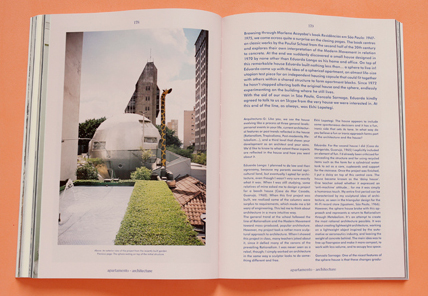“From the beginning, Carol and Roy knew they wanted to build a round house … ”
Dome for sale in Topanga Canyon.
You can find round and circular-form houses for sale right now in the US, UK, Australia and Canada for prices ranging from $87,500 to $10 million. On the lavish — and arguably garish — end of the spectrum, there’s this 1980s luxury villa on Hamilton Island, in Australia, and the “Corbetta Estate” in Los Altos Hills, California (which was the cooler and much more fun Corbetta Party House in a former incarnation).
Bringing up the low end of the market, at a modest 696 square feet in size, is one of the many small post-war round houses in Des Moines, Iowa.
A few other houses stand out –
You can also find two round houses for sale in the UK, one in Portland, Dorset, selling for £925,000, and the other in Sidmouth, Devon, selling for £849,950.
The late Bruce Chatwin gave a characteristically entertaining report of his 1973 visit with Konstantin Melnikov, at Melnikov’s cylindrical house in Moscow. The account is worth reading in full –
In January 1973, on a morning of Stygian gloom, I called on Konstantin Melnikov, the architect, at his house on Krivoarbatsky Lane in Moscow . . . . [M]y visit to Mr Melnikov was the high point of the trip, since, by any standards, the house itself is one of the architectural wonders of the twentieth century.
. . . . Melnikov’s house — or rather pavilion in the French sense — is set well back from the street, a building both Futurist and Classical consisting of two interlocking cylinders, the rear one taller than the front and pierced with some sixty windows: identical elongated hexagons with Constructivist glazing bars. The cylinders are built of brick covered with stucco in the manner of Russian churches. In 1973 the stucco was a dull and flaking ochre, although recent photos show the building spruced up with a coat of whitewash. On the front façade above the architrave are the words KONSTANTIN MELNIKOV ARKHITEKTOR — his proud and lonely boast that true art can only be the creation of the individual, never that of the committee or group.
 This month’s edition of Apartamento magazine features an interview with Brazilian architect Eduardo Longo, who designed — and has lived for decades in — a spherical house in São Paulo.
This month’s edition of Apartamento magazine features an interview with Brazilian architect Eduardo Longo, who designed — and has lived for decades in — a spherical house in São Paulo.
Built by Longo himself over a five-year period, beginning in the early 1970s, the house was meant to be the prototype for a utopian project of apartment blocks made of up dozens of spherical structures. The apartment blocks were never built, but Longo has now lived more than 30 years in his “ball house,” or Casa Bola.
Made of smooth molded concrete, the house is 25 feet in diameter, and has four levels, three bedrooms, several bathrooms, a dining room, a living room, a kitchen, and a hammock. Its decor is strictly minimalist and very white. Much more colorful on the outside, it sports a bright yellow slide that exits from below and a spherical yellow decoration on top.
Longo’s son Lucas, who grew up in the Casa Bola, now has a spherical house of his own. Both structures have been featured on the TV series The World’s Most Extreme Homes. The son’s house, whose levels are linked by curving ramps rather than stairs, is somewhat reminiscent of Eduardo Longo’s 1980 design for a utopian pavilion.
With the death of Brazilian architect Oscar Niemeyer on December 5, the world has lost a leading proponent of curved, rounded, wavy and spiraling forms. A modernist innovator, Niemeyer, who began working in the late 1930s, eschewed the straight lines and boxy shapes that had characterized modernism up to that time.
“Right angles don’t attract me. Nor straight, hard and inflexible lines created by man,” explained Niemeyer in The Curves of Time, his 1998 memoir. “What attracts me are free and sensual curves. The curves we find in mountains, in the waves of the sea, in the body of the woman we love.”
The Orcutt House, in Worthington, Ohio, “comprises two interpenetrating circles.” Built in 1958, its design, by architect Theodore van Fossen, reflects Frank Lloyd Wright’s principles of organic architecture. Now on sale for $749,000.
Another round house is available in Dalton, Georgia, for a mere $125,000. Built in 1972, it’s a two-story house with exposed beams.